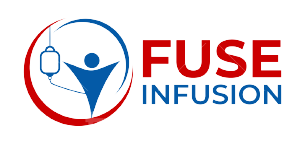In the United States, millions of individuals have suffered from this disease of osteoporosis. In the realm of osteoporosis treatment, Reclast infusion has emerged as a significant player, offering a promising solution to those seeking effective bone health management.
As with any medical intervention, it’s crucial to understand not only the benefits but also the potential side effects. In this blog post, we’ll explore the intricacies of Reclast infusion, its benefits, and possible side effects, and address the lingering question: How long do Reclast infusion side effects last?
So, without any delay, let’s continue to learn more:
Reclast Infusion
Reclast, a brand name for zoledronic acid, is administered through an infusion, making it a convenient and efficient option for osteoporosis patients. This bisphosphonate medication works by slowing down bone loss, increasing bone density, and reducing the risk of fractures.
Potential Side Effects of Reclast Infusion
Like any medication, Reclast infusion is not without potential side effects. It’s essential to be informed and vigilant about how your body may respond. Common side effects include:
- Flu-like symptoms
- Fever
- Muscle pain
- Headaches
These side effects typically occur within the first three days post-infusion. However, it’s crucial to note that not everyone experiences these side effects, and they often diminish with subsequent infusions.
Any serious side effects from Reclast, such as urinating less frequently or not at all, drowsiness, confusion, mood swings, increased thirst, nausea, appetite loss, weight gain, swelling, muscle spasms, numbness, or tingling (especially around your mouth), fever, chills, body aches, flu-like symptoms, pale skin, susceptibility to bruising easily, unusual weakness, lightheadedness, severe joint/bone/muscle (wheezing, chest tightness, trouble breathing), should be immediately reported to your doctor.
Long-Term Side Effects of Reclast Infusion
One common query surrounds the long-term side effects of Reclast infusion. While short-term side effects are more immediate and transient, the long-term impact is a topic of interest and concern. Studies suggest that for the majority of patients, the benefits of Reclast in preventing fractures and enhancing bone density outweigh potential long-term side effects. It’s crucial, however, to consult with your healthcare provider regarding your specific health profile and any concerns you may have. The following are the long-term side effects of reclast infusion:
- Agitation
- Blurred vision
- Dizziness
- Irregular heartbeat
- Depression
- Lethargy
- Cough
- Chills
- Chest pain
- Irritability
- Breathing difficulty
- Lower back pain
- Muscle cramps
- Chest tightness
- Unusual bruising
- Seizures
- Rashes on skin
- Sudden sweating
- Nausea
- Muscle pain
- Swollen glands
- Stupor
Some of the long-term side effects of reclast infusion are listed above. In case you see any of these long-term signs, you should consult the doctor immediately.
Navigating the Duration of Side Effects
Understanding how long Reclast infusion side effects last is pivotal for patients planning their post-treatment activities. Generally, the initial side effects are most pronounced in the days following the infusion and tend to subside within a week.
It’s essential to communicate openly with your healthcare provider about any lingering symptoms, as they can provide guidance tailored to your unique health situation.
The primary side effects of the injection include headaches, flu-like symptoms, and joint, muscle, and bone discomfort. The flu-like symptoms appear just after the initial injection and usually disappear in 24 to 48 hours.
The most common side effects of the drug include diarrhea, discomfort in the limbs, and constipation. Less commonly occurring side effects include heartburn, stomach ulcers, and pain or difficulty swallowing.
Reclast infusion stands as a valuable tool in the management of osteoporosis, offering both short-term and long-term benefits. By staying informed about potential side effects and openly communicating with your healthcare provider, you can navigate your osteoporosis journey with confidence and make informed decisions about your bone health.
Remember, individual responses to medication vary, and this blog post is not a substitute for professional medical advice. Always consult with your healthcare provider for personalized guidance on your specific health needs.
Potential Risks of Reclast Infusion
Reclast can cause major health problems because it includes zoledronic acid. Certain groups might pose a higher risk than others. If this worries you, ask your doctor or chemist about alternate options.
Kidney Damage
Reclast can harm the kidneys, especially in people who already have kidney problems or are taking medications that can harm the kidneys. Blood tests are required prior to each infusion to make sure your kidneys are functioning properly.
If you want to avoid kidney damage in your body because of the Reclast infusion, then you should consult your healthcare provider about fluid consumption before receiving every infusion.
Breakdown of the Jaw (Osteonecrosis)
Although rare, Reclast can cause the jawbone to weaken and dissolve. This disintegration is more likely to happen if you have had bone surgery inside or outside of your mouth, dental implants, tooth extractions, or unhealed oral infections while using Reclast.
Lower blood levels of calcium
Reclast may cause a decrease in your blood calcium levels. To prevent their calcium levels from dropping to dangerously low levels, people who already have low calcium levels or other abnormal electrolyte levels need to get treated for these conditions before starting zoledronic acid (Reclast).
Low calcium levels are more common in Reclast users with Paget’s disease. To help avoid low calcium levels, you should take calcium and vitamin D supplements.
Leg Bones Fracture
Those patients who receive Reclast may very rarely suffer from leg bone fractures for no apparent reason. If you get any new dull or excruciating hip or thigh pain, stop taking zoledronic acid (Reclast) right once and talk to your doctor.
Reclast Dosage Recommended
Reclast is administered intravenously into the body of the individual. The dosage changes according to the condition being treated. The recommended dosages are as follows:
- One 5-mg intravenous infusion administered annually to treat postmenopausal osteoporosis
- For the prevention of postmenopausal osteoporosis, take 5 mg every two years.
- For the treatment of Paget’s disease of the bones, a single 5 mg infusion administered once a year
- 5 mg once a year to treat or prevent osteoporosis brought on by steroids.
Contact Fuse Infusion Today for Reclast Infusion Treatment
To make reclast infusion treatment more convenient and comfortable for all those patients who want to receive it, FuseInfusion offers the services of reclast infusion in a safe and comfortable environment.
To ensure that you receive safe, effective treatment, our team of medical specialists is prepared to evaluate your needs and offer advice as needed.
Give us a call at 914 460 4891 to find out more about our treatment options and to arrange an appointment to explore how reclast infusion functions. You can also visit our website to find out more about our services!

